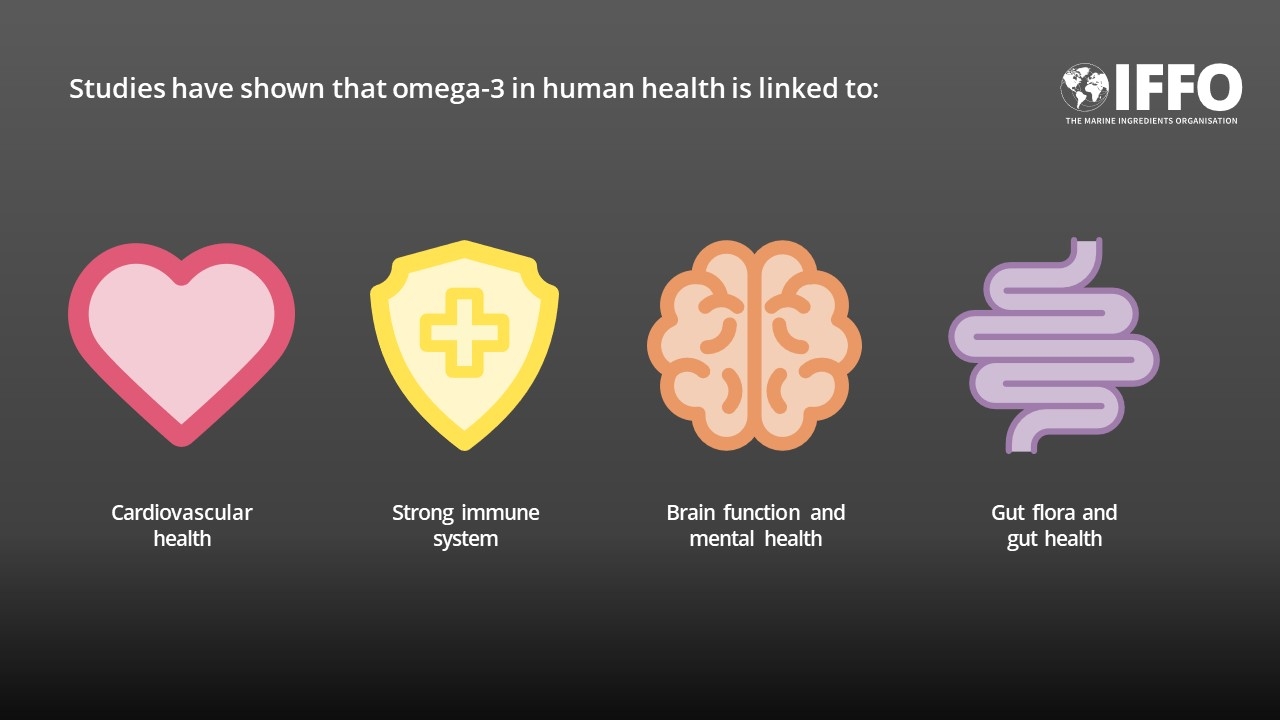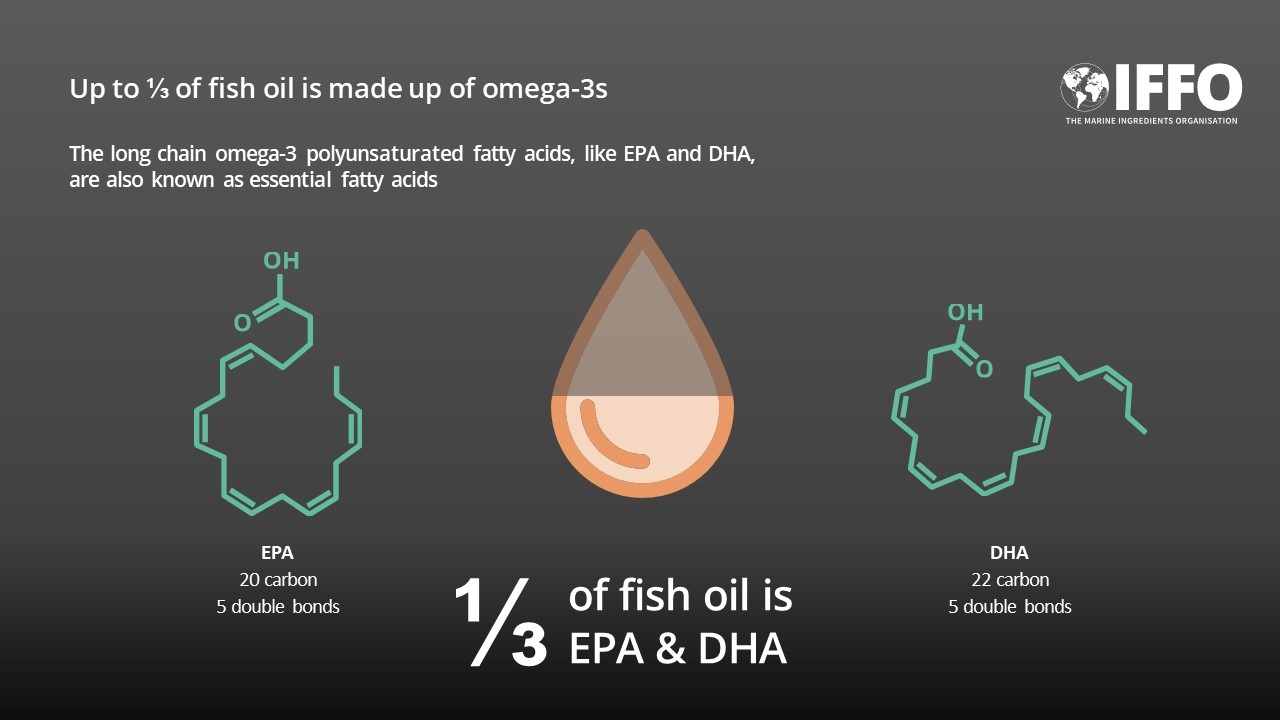This opinion piece, authored by Dr Brett Glencross, was published in the International Aquafeed Magazine, March 2025 edition
One of the key benefits from consuming farmed seafood is their health promoting benefits as part of our diet. But what actually contributes to that claim? In a world brimming with health fads and dietary trends, omega-3 fatty acids are one of those nutritional items that have stood the test of time, earning their place as a cornerstone of good health. Whether you’re reading through wellness blogs or listening to your doctor’s advice, chances are you’ve heard about these essential nutrients. But what makes omega-3 so special? From boosting brain function to reducing inflammation, omega-3s as a micronutrient are a small but influential force in the nutrition story.
So, what actually are omega-3 fatty acids? Omega-3 fatty acids are a type of polyunsaturated fat, often referred to as "essential" because our bodies cannot produce them (or at least at the amount we need) on their own. Therefore, we must obtain these nutrients through our diet. The three main types of omega-3s you are likely to come across are:
- ALA (Alpha-Linolenic Acid): found primarily in plant-based sources like flaxseeds, and nuts.
- EPA (Eicosapentaenoic Acid): found in fatty fish such as salmon, mackerel, and sardines.
- DHA (Docosahexaenoic Acid): also found in fatty fish and is a vital component of healthy brain and eye tissues. In most cases EPA and DHA are usually found together, though the ratio between the two often varies.

Each type of omega-3 plays a unique role in maintaining and enhancing overall health, making a varied intake essential for optimal benefits. Notably, ALA is a short-chain omega-3 and does not have the same nutritional benefits as the long-chain omega-3’s of EPA and DHA, so it should not be regarded in the same context. However, it can be the starting block for natural production of EPA and DHA, though the rates that this happens at are quite low in most humans. In simpler language, you’re better off eating EPA and DHA rather than relying on ALA derived production for your needs.
So, what are the health benefits of long-chain omega-3? There are actually several that have been proven through decades of research from hundreds of medical scientists across the world. The European Food Safety Authority has even published a scientific opinion substantiating many of the health claims of omega-3 [EFSA Journal 2011;9(4):2078]. Among them are brain health and cognitive function. Indeed omega-3s are often referred to as "brain food" for good reason. DHA is a critical building block of the brain and retina (eye), accounting for a significant portion of their fat content in these tissues. Additionally, numerous studies have shown that omega-3s improve cognitive function, enhance memory, reduce depression and enhance mood and may even protect against age-related cognitive decline. In children, the use of omega-3 supplementation has been linked to better attention spans and academic performance. While in older adults, they have also shown promise in reducing the risk of Alzheimer’s disease and other forms of dementia.
Omega-3 also play an important role in cardiac (heart) health. In the 21st century cardiac disease remains a leading cause of death. However, omega-3 fatty acids have been shown to offer a natural line of defence. They are known to reduce blood triglyceride levels, lower blood pressure, and decrease the risk of arrhythmias (irregular heartbeats). Omega-3s also help prevent the build up of plaque in arteries, which can lead to heart attacks and strokes. They have many of the features of statins, but in a natural form.
Another claim on omega-3 has been their role in reducing inflammation. While inflammation is the body’s natural response to injury or infection, chronic inflammation can lead to serious health problems, including arthritis, diabetes, and certain cancers. Omega-3 fatty acids, particularly EPA, have been shown to possess powerful anti-inflammatory properties. They work by reducing the production of inflammatory molecules through the production of special pro-resolving mediators (SPMs) which help to alleviate inflammatory processes.
Like most things dietary though, how much you consume has an important impact on the effect. This is a key issue with nutrition, it isn’t binary, it is both qualitative and quantitative. So how much omega-3 do you need? Well, the optimal intake of omega-3 varies depending on age, gender, and health conditions and the effect you are after. There are some general guidelines which suggest:
- Adults: 250–500 mg of combined EPA and DHA daily.
- Pregnant or breastfeeding women: 200–300 mg of DHA daily.
- Individuals with cardiac disease: Up to 1,000 mg of EPA and DHA daily.
While omega-3s are generally considered quite safe, excessive intake has been associated with some side effects like nausea, diarrhoea, or an increased risk of bleeding. People on blood-thinning medications should consult their doctor before taking omega-3 supplements. So, like many things in nutrition, balance is important.
It is clear that omega-3 fatty acids are a micronutrient with some special properties. They offer a wide array of health benefits that touch nearly every aspect of our well-being. From supporting heart and brain health to eye function, among others, these essential nutrients are truly an indispensable part of a balanced diet and one of the keys to a healthier life.









